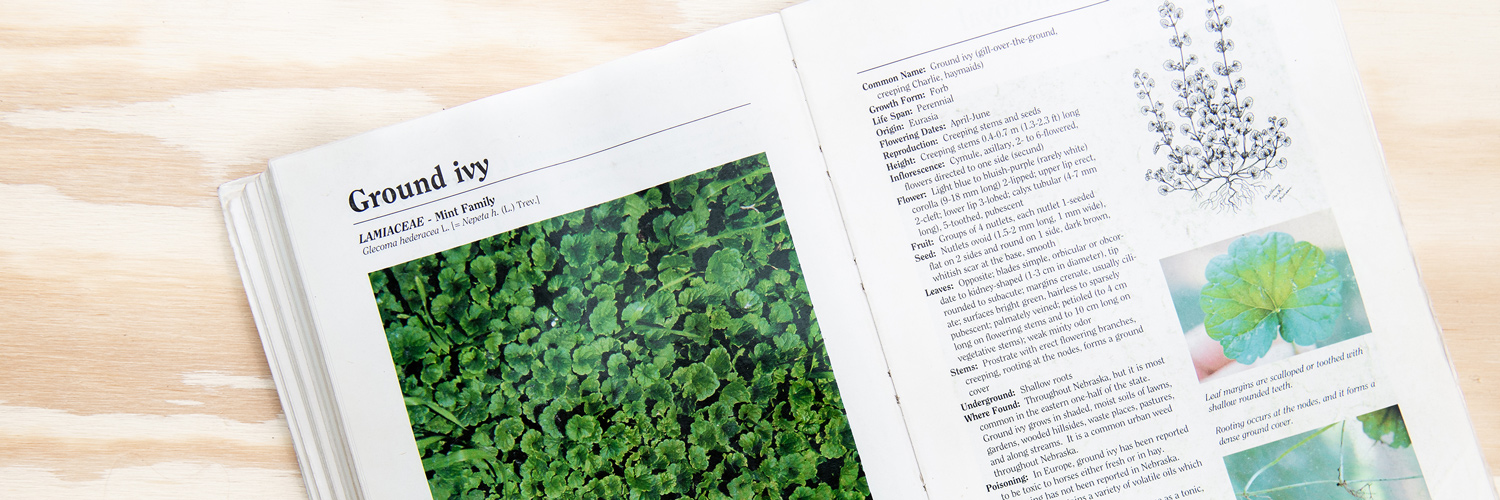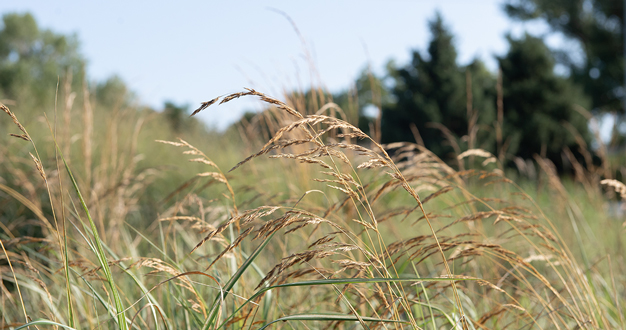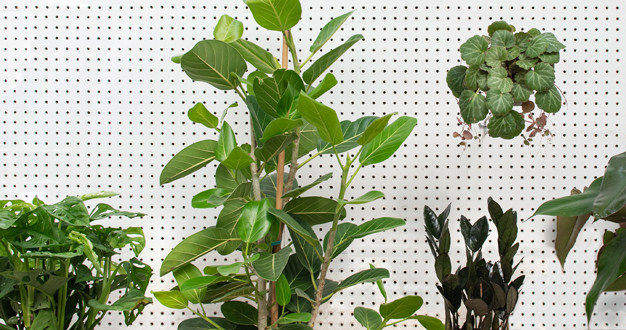
By definition, a weed is just a plant that’s growing in a place where it isn’t wanted. And if that were the end of it, we might not care so much – but a weed can do more than show up without our permission. Weeds create visual chaos in a carefully designed landscape. They compete with other plants for water and nutrients. And they can often produce almost unlimited copies of themselves.
If weeds are a challenge in your lawn and landscape, we can help. Here, we introduce the basics of weed control, including where to start, what treatments to use, and when. And we share a few tips for safely applying treatments – to help protect you and your family, the living community around you, and even your budget too.

First Step: Know Your Weeds
The first step to effective weed control is knowing what general type of weed you’re dealing with. Most of our well-known lawn and landscape weeds fall into two basic categories, depending on how long it takes them to complete their life cycle.
Annual Weeds
Annual weeds complete their entire life cycle – germination, growth, flowering, seed production, and death – in one year or less. And they only reproduce by seed. Some well-known examples of annual weeds include crabgrass, spotted spurge, purslane, smartweed, and ragweed.
Perennial Weeds
Perennial weeds live for a long time. They can grow, mature, flower, and go to seed again and again over the course of several years. Perennial weeds are challenging to control because they can spread both by seed and by vegetative means like tubers, rhizomes, and stolons. They may also have well-established root systems and sometimes deep tap roots. Perennial weeds you might see in your lawn and landscape include violet, dandelion, clover, bindweed, plaintain, burdock, and ground ivy.

Next, Make a Plan
Once you know what kind of weed you have, you’re ready to develop an effective treatment plan – including the best method to use and the ideal time of year to use it. In general, weed control can be divided into three basic categories: cultural control, weeding, and chemical herbicides.
Cultural Control
We can reduce the number of weeds in our lawns and landscapes just by creating an environment that makes it difficult for them to compete with the plants we want to have around. One great way to keep weeds out of your lawn is by simply building heathy turfgrass. If the grass is happy, weeds have a harder time competing with it for nutrients, sunshine, and water. And in a landscape bed, mulch is effective at preventing weeds too. Mulch keeps soil moisture and temperature consistent, which reduces stress on our landscape plants and helps them outcompete weeds. Mulch – and groundcovers such as ajuga, artemisia, or lamb’s ear – also shades the soil and prevents weeds from germinating in the first place.
Cultural control methods are a great way to reduce the need for chemical inputs and avoid the potential effects a chemical treatment may have on your existing landscape plants, the natural community, or the health of you and your family. And once you have a weed-resistant environment in place, it’s a relatively “hands off” method too. For the most part, weeds are prevented from ever showing up at all.
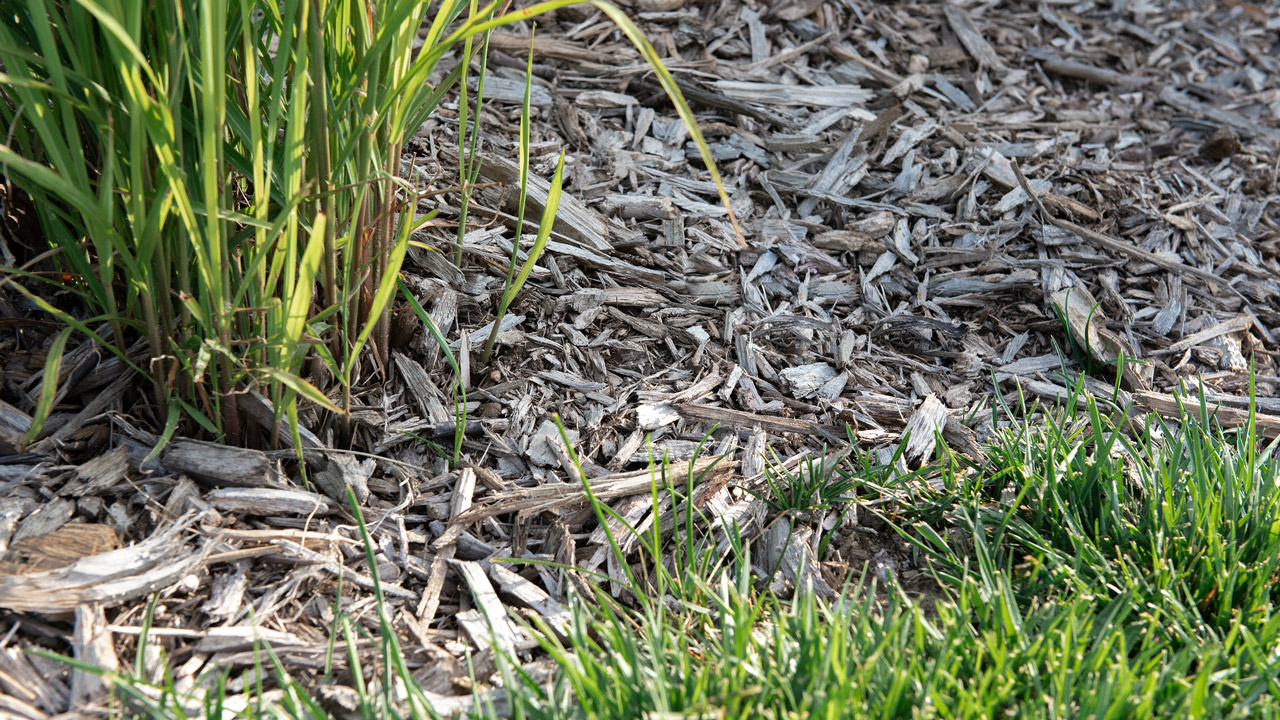
Weeding
It’s that classic garden task – pulling or hoeing up a weed so it can no longer grow and produce seed. This method is most effective on annual weeds before they produce seed – since annuals tend to have shallower root systems and can only reproduce from seed. With perennial weeds, weeding is a little trickier. A perennial’s root system is often extensive. It’s easy to leave a few roots behind when we pull or hoe, and a new plant can often regenerate from even tiny portions of a damaged root.
Weeding of course relies on seeing a growing weed before you can act. With cool- and warm-season weeds appearing throughout the growing season, this can be a continuous process.
Chemical Control
When applied with care and at the right time of year, chemical weed control can be a safe and effective method to reduce weeds. The first step is to know your weed before choosing an herbicide and a time to treat.
For annual weeds, the most effective treatment is done early in the spring growing season using a pre-emergent herbicide to prevent weed seeds from germinating. However, applying this type of herbicide before you’re even sure you have a weed problem can lead to unnecessary chemicals in the environment and an unneeded hit to your wallet. On the other hand, post-emergent herbicides are useful when all you need is to spot treat a few annual weeds that you already know you have. They’re good at taking out tender weed seedlings while they’re actively growing and absorbing water and nutrients from their surroundings – along with any herbicide you apply. Post-emergent herbicides also have a short residual effect in the soil too.
Perennial weeds require a little different approach. The most effective time to control a perennial weed is in the fall, ideally after the first frost when the plant is pulling nutrients down into its roots in preparation for winter dormancy. A systemic herbicide – one that’s absorbed and carried to all parts of the plant – coupled with the right timing makes an effective treatment against perennial weeds. Contact herbicides, on the other hand, kill the above-ground portion of a perennial weed but may not always get the root too.
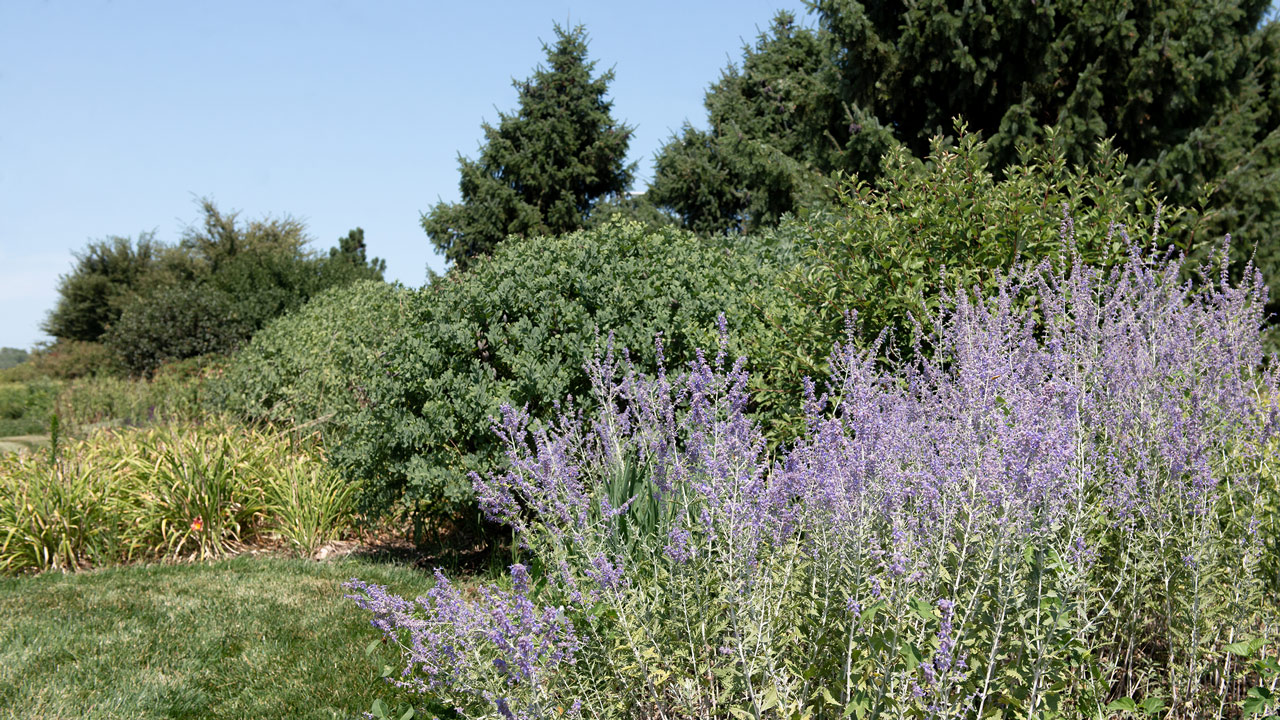
Safe and Effective Use of Herbicides
When using any type of chemical in our gardens and landscapes, it’s important to follow a few guidelines in order to maximize the effectiveness of the product and to limit any unintended impacts it may have on the surrounding natural community.
- Always read and follow label directions. It’s not only a great idea, it’s the law. The label is there to help you decide which product is effective for the weed you’re after, how to safely apply it, how much to apply, and when.
- Whenever you can, spot-spray individual problem weeds rather than broadcast the product over a large area.
- Wait for a cooler, windless day. Conditions such as temperature, humidity, and precipitation can affect a product’s safe use and how well it works. Many herbicides are volatile at high temperatures, and wind can carry the product into areas where you didn’t want it to go.
- Check the forecast. If it’s going to rain within the next twenty-four hours, you’ll want to wait for another opportunity when rainfall won’t wash the product away. But again, read the label to be sure.
- In a landscape bed, it’s often best to just mulch well and pull weeds. Broadleaf herbicides can’t tell the difference between a dandelion and your prize-winning roses. If you need to use a chemical weed control in your landscape, be sure to read the label and choose one listed as safe for ornamental beds.
Come See Us
Weeds in the yard or garden have you frustrated? We’re here to help. If you’re not sure which challenge you’re facing, bring a plant sample to the Plant Care desk. We’ll help you identify it. And we’ll help you figure out the best course of action to keep it and any other uninvited plants out of our lawn and landscape too.

